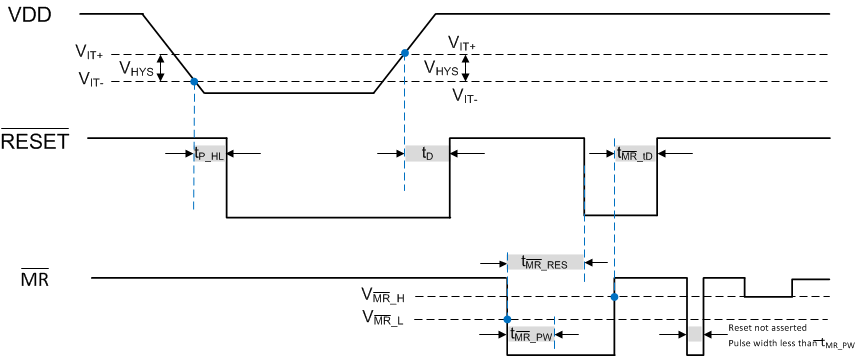SNVSB03D December 2018 – January 2020 TPS3840
PRODUCTION DATA.
- 1 Features
- 2 Applications
- 3 Description
- 4 Revision History
- 5 Device Comparison
- 6 Pin Configuration and Functions
- 7 Specifications
- 8 Detailed Description
-
9 Application and Implementation
- 9.1 Application Information
- 9.2 Typical Application
- 10Power Supply Recommendations
- 11Layout
- 12Device and Documentation Support
- 13Mechanical, Packaging, and Orderable Information
Package Options
Mechanical Data (Package|Pins)
- DBV|5
Thermal pad, mechanical data (Package|Pins)
Orderable Information
8.3.3 Manual Reset (MR) Input
The manual reset (MR) input allows a processor GPIO or other logic circuits to initiate a reset. A logic low on MR with pulse duration longer than tMR_RES will causes reset output to assert. After MR returns to a logic high (VMR_H) and VDD is above VIT+, reset is deasserted after the user programmed reset time delay (tD) expires.
If MR is not controlled externally, then MR can be left disconnected. If the logic signal controlling MR is less than VDD, then additional current flows from VDD into MR internally. For minimum current consumption, drive MR to either VDD or GND. VMR should not be higher than VDD voltage.
 Figure 47. Timing Diagram MR and RESET (TPS3840DL)
Figure 47. Timing Diagram MR and RESET (TPS3840DL)